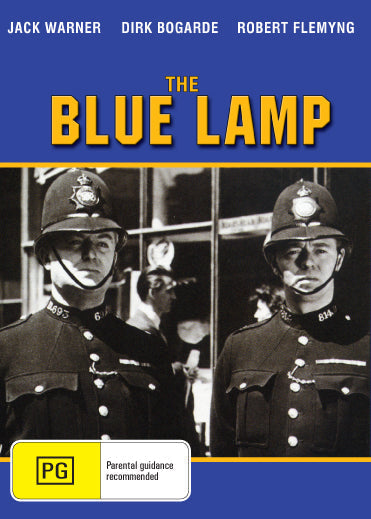rareandcollectibledvds
The Blue Lamp
The Blue Lamp
 Before you ORDER please check do you wish to order a DVD or a Digital Download file
Before you ORDER please check do you wish to order a DVD or a Digital Download fileFor DVD use the GET DVD Button
For a Digital Download use the DOWNLOAD Button
Couldn't load pickup availability
We follow the daily activities of two London bobbies, veteran Police Constable George Dixon (Jack Warner) and rookie Police Constable Andy Mitchell (Jimmy Hanley). Meanwhile, young hoods Tom (Sir Dirk Bogarde) and Spud (Patric Doonan) plan a series of robberies with Tom’s girl Diana (Peggy Evans), a discontented beauty, as an inside worker. But in their second crime, one of our heroes is shot, setting off a citywide manhunt. The killer is clever, but will he outsmart himself?
STARS: Jack Warner, Dirk Bogarde, Jimmy Hanley
84 min | Crime, Drama, Thriller | 1950 | Color
Movies with low demand and/or out of print are manufactured-to-order using high quality recordable DVDs. Please read FAQs if unsure, or send a query.
All DVDs are Region 0 and are guaranteed to play on any DVD player in any country in the world
Satisfaction Guarantee – if you are not satisfied with any aspect of your purchase then we will explore all options to rectify the issue
COMBINED POSTAGE: ONLY CHARGED FOR THE FIRST DVD ALL OTHERS IN A MULTIPLE ORDER ARE POST FREE
Postage: Free In Australia.
Postage: Rest Of The World at Table Rate
All DVDs come in a DVD case with color artwork and printed disc
All DVDs are available as an MPEG4 file sent to you via an email link. Save on postage and waiting time. Transfer can take up to 12 hours depending on the time zone you are in.
Very realistic
The Blue Lamp This was made just five years after the end of the second world war. Some old folk I spoke to as a kid told me that when they were kids there were no gangs of youths on the streets: there were gangs of men. After the second world war, we began to see the emergence of youth crime. It has grown since then, practically spiralling out of control. When we look at this film from the frame of reference of the early twenty-first century, this film where the London underworld joins with the police to track down the killer of a policeman looks unreal. If you have read any of the reminiscences of police officers of the period (such as Robert Fabian’s “Fabian of the Yard”) you will see that this sort of relationship between the police and the underworld is right on the button. This is the sort of thing that would have happened. The type of policing that this film portrays belongs to a bygone era, when criminals often didn’t have cars to make their getaways. It also shows the advantage of the beat copper, who knows his beat so well that if there is anything unusual he notes it down, and if there is any trouble, he has a fair idea of who is causing it. And the pair played by Jimmy Hanley and Jack Warner showed perfectly the inexperienced learning from the experienced. The situations, such as the costermonger being continually told to “move along there” are real for then but not for now, when police work, once done using discretion, is now, like everything else, done by bureaucracy. The film is shot in north London, in the Paddington, Maida Vale and Westbourne Park areas. P C Dixon’s beat is round by the Grand Union Canal in an area known as Little Venice. The police station is the old Paddington Green station, which has since been knocked down and replaced by a new one on the Edgware Road. What you must not do is watch this film and judge it by today’s standards. I am old enough to know that the social conditions portrayed in this film are as realistic as it gets; and so is the way the police operate.


